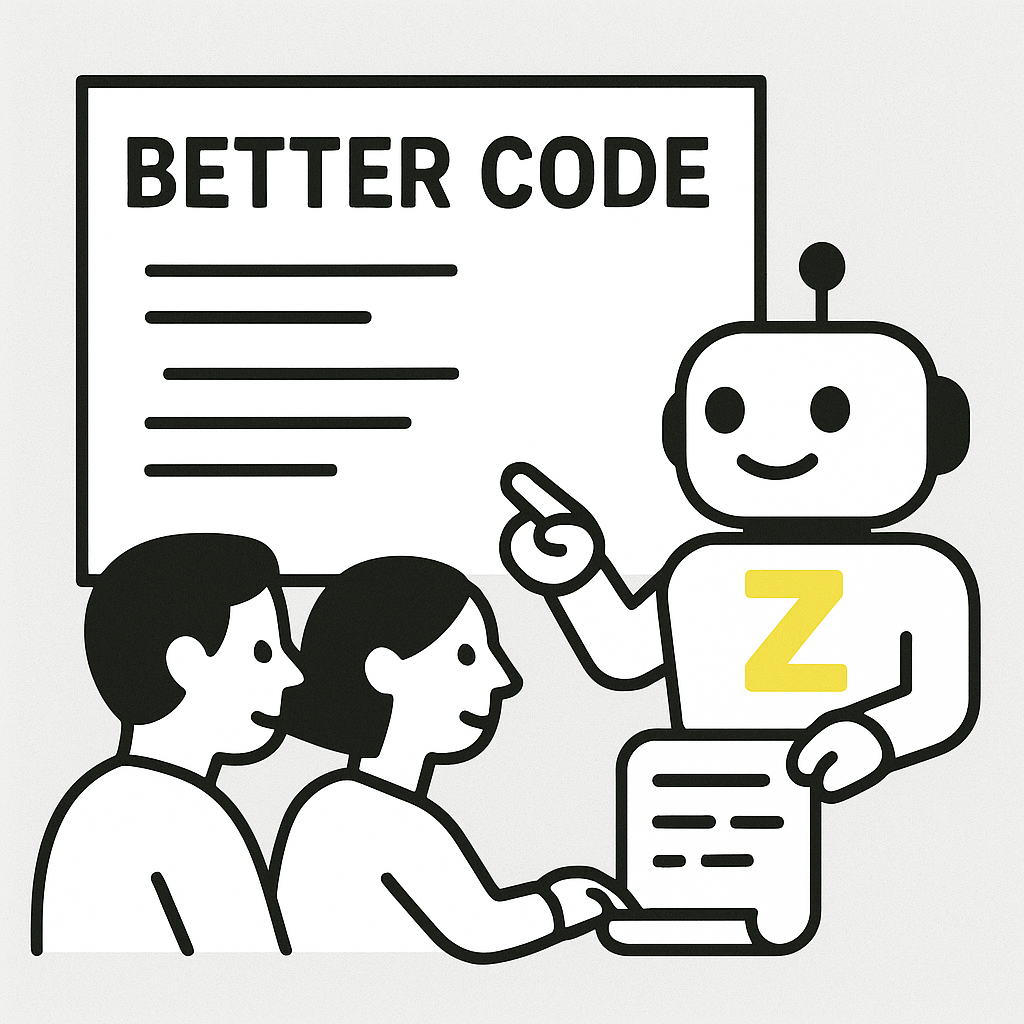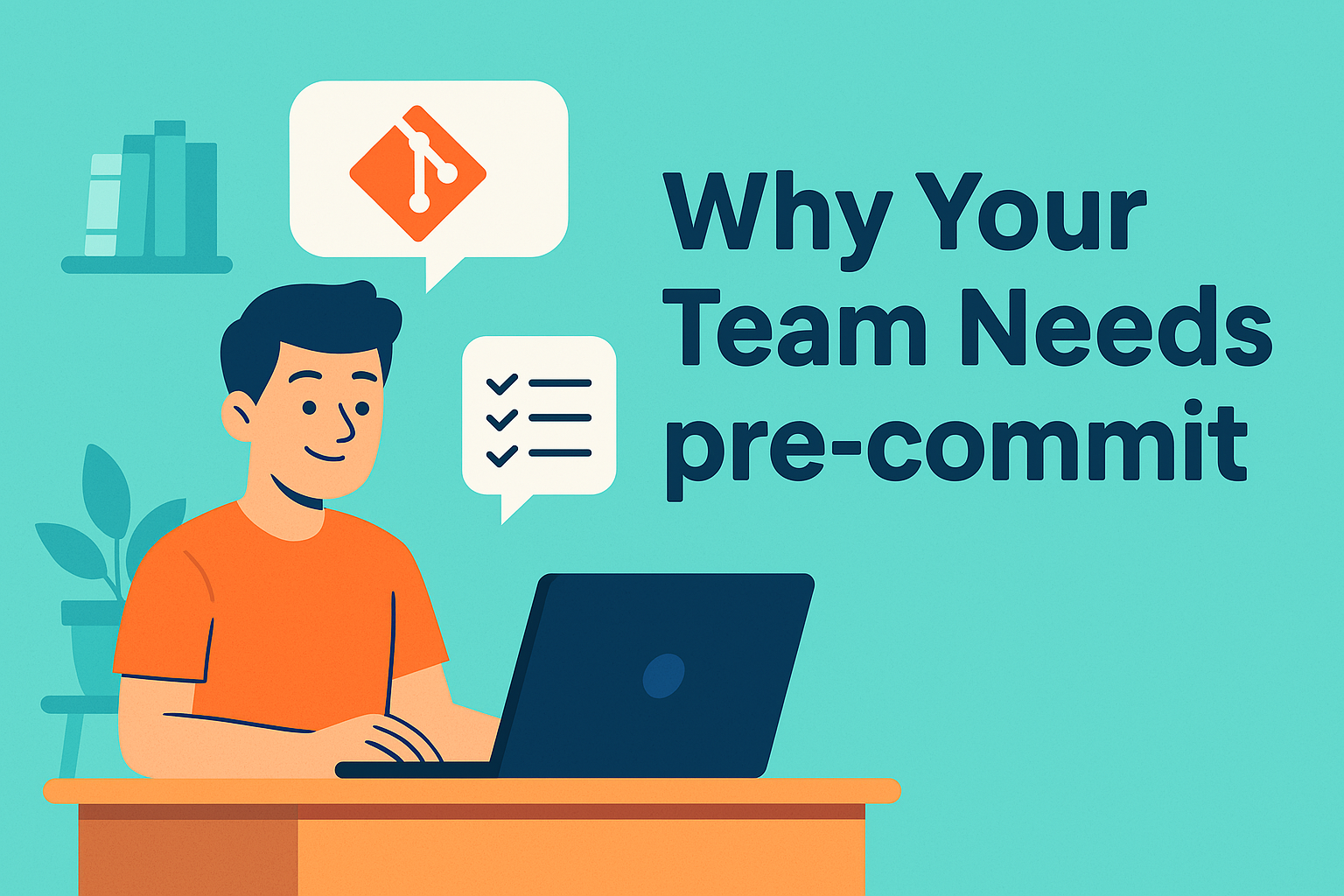
From Zero to Production: A Complete Python Setup Guide
You've got a brilliant Python project idea. You create a file called main.py, and start coding. Fast forward six months: your script has grown into multiple files, dependencies, and contributors. Now you're drowning in errors and deployment headaches. Most Python projects start this way, but they don't have to. By setting a strong foundation, you save headaches and plan for project success.

Hands-On CI: Building Your First GitHub Actions Workflow
We have previously talked about why Continuous Integration is a powerful DevOps concept for helping your team develop high-quality code faster. Today we are taking you through a deep-dive into the “how,” with step-by-step instructions for setting up a linting pipeline in GitHub Actions. We’ll explain how and why CI workflows can take your team to the next level!

Legacy Code: Defuse the Time Bomb
Legacy code that doesn’t measure up to your linting or formatting standards can lie dormant for months and then explode into a crisis. Tackling these hidden hazards isn’t just a nice-to-have, it’s essential for keeping your software delivery engine humming. In this post we’ll walk through the ways that outdated legacy code can bring your team to a halt, and show you how Zumbro, our GitHub App, offers a fast and straightforward way to get control of your legacy mess.

How Zumbro Helps Your Software Team
The Zumbro App for GitHub helps you define, apply, and enforce engineering standards right in your workflow, without adding overhead. Below are three situations where teams hit the same roadblocks, and how Zumbro can help you ship better code faster.

Introducing Zumbro: Slash Tech Debt with Automated Code Fixes
Say Hello to Zumbro, our GitHub app. Zumbro is the DevOps automation tool that helps your team define, apply, and enforce engineering standards, without adding overhead. If you’re looking to improve teamwork, reduce technical debt, and accelerate shipping velocity, Zumbro gives you the foundation to do it, right inside your GitHub workflow.

The pre-commit Playbook
One of the core ideas behind DevOps is "shifting left." That means moving critical checks, testing, and feedback earlier in the software development lifecycle. Pre-Commit takes that "shift left" principle and gives it teeth. By running automated checks before code gets committed, it helps teams enforce consistency, spot bugs early, and maintain high standards. Check it out:

Teach Your AI Agent to Write Python Logs Like a Pro
Last week we made the case for why logging is the DevOps superpower that gives you X-ray vision into your systems. What if you are using AI Agents to write your Python code? Just like we train junior developers to build habits that lead to better software, we need to guide our AI Agents to log their code in smart, structured, and consistent ways.

Why Your Team Needs pre-commit
It’s easy to overlook pre-commit when you’re already using GitHub and have a continuous integration pipeline. Why add complexity? In fact, when used well, pre-commit can be the simplest and most effective way to eliminate bugs, style issues, and config drift before they even enter your Git history. pre-commit helps shift quality left, right into your fingertips as you write and commit code.

Why Linters Hate Unused Imports
If you’ve been writing Python code for long, you’ve run into one of the many tools that want to clean up your files. And you’ve probably noticed that they all want to delete unused imports. This might seem a little nitpicky, but there are good reasons to nuke unused imports. And while it starts with clean code, the reasons don’t end there.

The Elephant in the Room: Dealing with Legacy Code
It’s easy to think of legacy code as something ancient and untouchable, written by long-gone developers in a forgotten dialect of JavaScript. But the truth is more complicated. Legacy code is just code that’s still running your systems, even though it no longer meets your team's standards. So what do you do with it?

The Goldilocks Pull Request
A Pull Request should be focused. It should do one thing well: fix a bug, add a feature, or refactor a specific part of the code. This helps reviewers follow what changed and why, help CI tools test your changes, and help your future self understand the changes. Your PR should appeal to Goldilocks: not too large, and not too small.

How Code Reviews Should Work
The best code reviews feel like collaboration, not judgment. They’re an opportunity to ask questions, learn, and improve as a team. When the small stuff is already taken care of, there’s space for that conversation to happen. Caparra is building tools to make this easier for your team.

Python Linter Showdown
Python Linter Showdown! It’s time for a spirited comparison of four popular Python linters: black, flake8, pylint, and ruff. Each tool promises to tidy up your code, catch pesky bugs, and keep your scripts neat. Our contestants today will face off on three files containing some not-so-great Python. Get ready to witness our code-based house of horror!

Clean Commits from the Start with pre-commit
Have you ever run git commit, only to realize later that you forgot to fix a small error? If so, you know that tiny missteps can quickly add up to big hassles for your entire team. That is why a simple tool called pre-commit can be so helpful. It automatically runs checks, linters, and other automated routines right before you commit your code.

Sort It Out: How isort Makes Python Better
When working with Python, keeping your code clean and organized is essential. You may have heard of isort, a handy tool that automatically sorts your Python imports. Keeping your import statements sorted is a simple step that is deceptively powerful, and we’ll talk about how adding isort to your Python workflows can save you hours and hours of time debugging your code. If only every part of coding was this easy!

Deployment Frequency: The Key to High-Performing DevOps
To measure DevOps success, Deployment Frequency is a critical yardstick. It is one of the four DORA (DevOps Research and Assessment) Metrics that measure software delivery performance. The more frequently an organization can successfully deploy code to production, the more agile and responsive it can be to changing market demands, customer needs, and security challenges.

DevOps Implementation Guide: From Zero to Hero (2025)
DevOps can be a game-changer for software development and IT operations. But what if your team has never done DevOps before? Transitioning to a DevOps culture can feel overwhelming. Fortunately, you don’t need to flip the switch overnight. Let’s walk you through the step-by-step process of introducing DevOps to a team that has never practiced it before.

No One Should Be Deploying Code at 2 AM
Deploying code at 2 AM is a cry for help. It signals a process problem, not a people problem. If your team is routinely making production changes in the dead of night to minimize impact on users, then you’re not reducing risk; you’re just shifting it onto tired, overworked developers who are more likely to make mistakes.

Continuous Deployment in Action
Continuous deployment is the practice of automatically releasing every validated code change into production. In this workflow, as soon as a developer pushes code to the repository, it goes through automated testing and, if it passes, it is deployed immediately. This ensures a steady stream of improvements and bug fixes, making software development more dynamic and responsive.

The Hidden Cost of Toil in DevOps
DevOps is all about efficiency, reliability, and automation. But within every DevOps team's workflow, there’s a hidden tax that drags down productivity and morale: toil. If left unchecked, toil can lead to burnout, slower innovation, and unnecessary operational costs. Reducing toil is a key focus for Caparra, and a big motivator for our work in building AI-powered tools focused on DevOps.